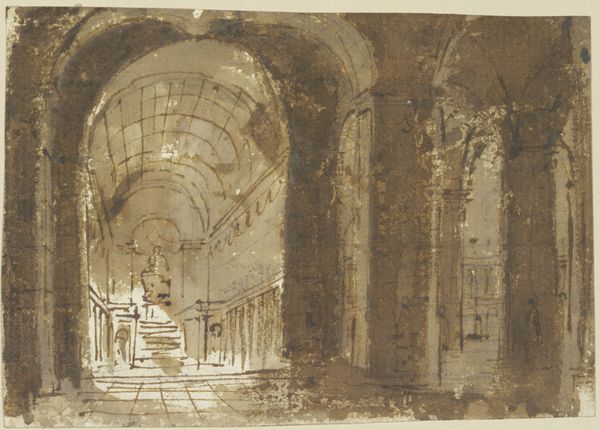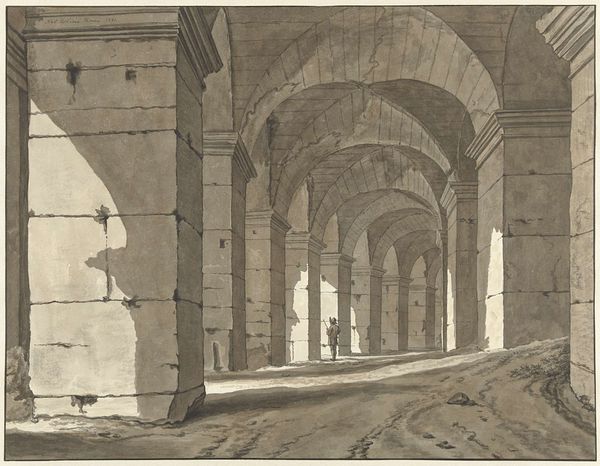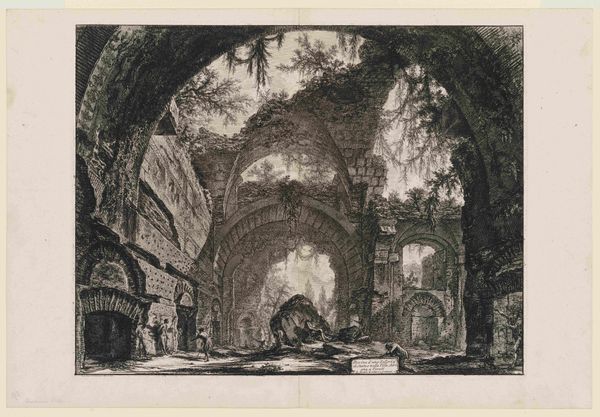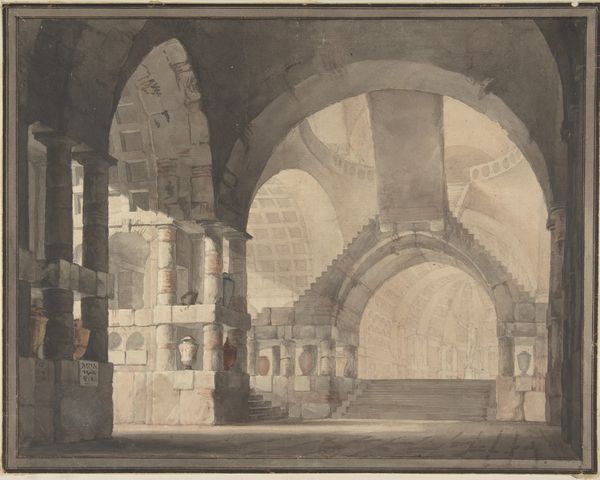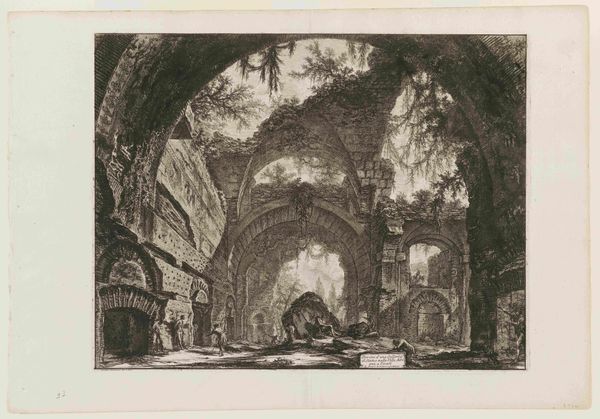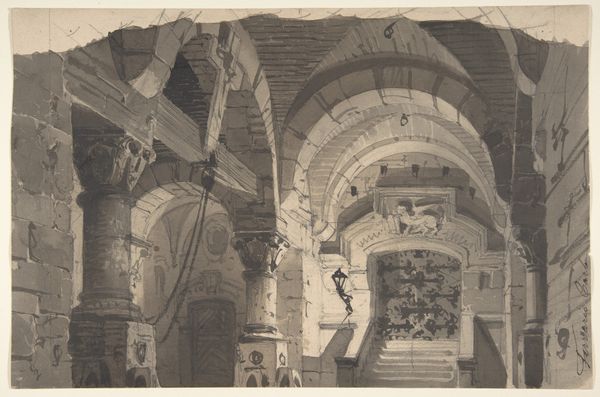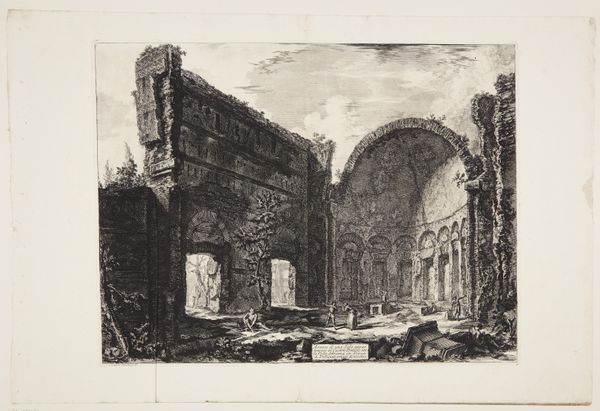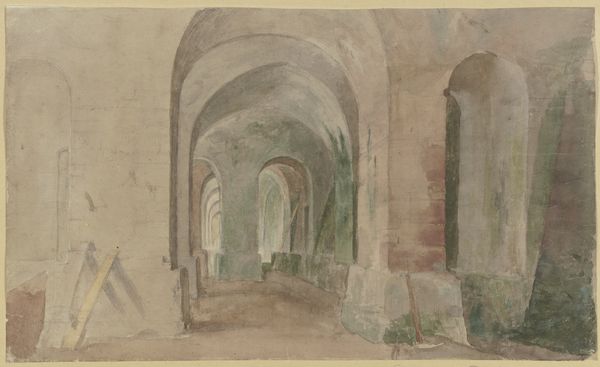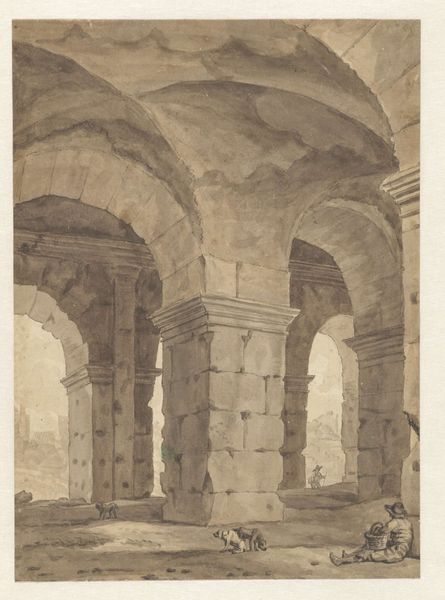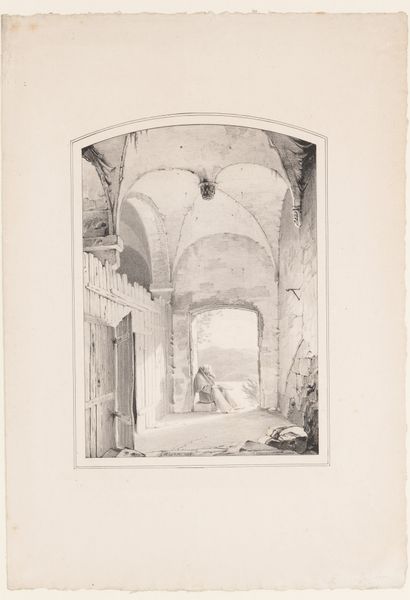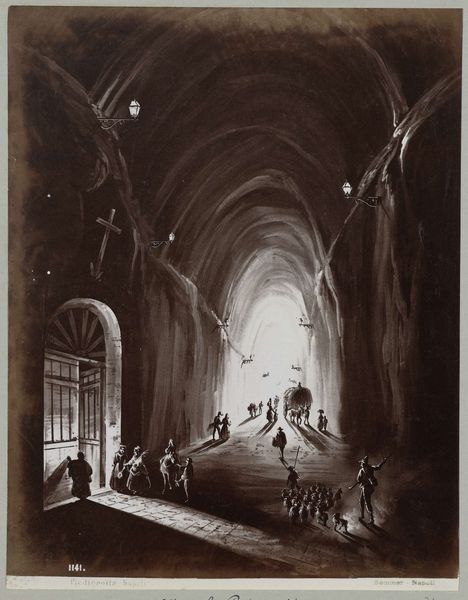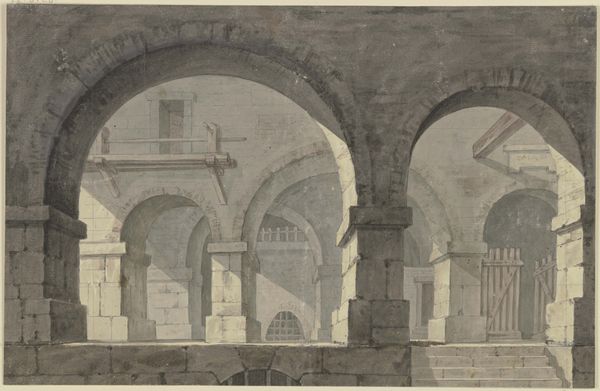
Large Ruined Portico or Corridor (recto); Sketches of a Draped Figure and Architecture (verso) c. 1600
0:00
0:00
drawing, paper, ink, chalk, graphite, black-chalk, architecture
#
drawing
#
greek-and-roman-art
#
landscape
#
paper
#
form
#
ink
#
chalk
#
line
#
graphite
#
cityscape
#
black-chalk
#
watercolor
#
architecture
#
realism
Dimensions: 408 × 527 mm
Copyright: Public Domain
Editor: Here we have "Large Ruined Portico or Corridor," dating back to around 1600, artist unknown. It's a drawing using ink, graphite, and chalk on paper, currently at the Art Institute of Chicago. It has such a haunting, decaying quality. How do you interpret this work? Curator: I see a potent commentary on power and its inevitable decay. Look at the meticulous rendering of architectural grandeur, now crumbling. This was likely created during a period of intense social stratification, a stark reminder that even the most formidable structures and seemingly immutable social orders are ultimately transient. What narrative of empire do you see emerging from these ruins? Editor: I suppose it speaks to the eventual fall of any civilization, how even the grandest structures return to nature. It’s like a memento mori. Curator: Precisely. And consider the choice of media – the ephemeral nature of chalk and ink, almost as if the artist is highlighting the fleeting essence of the power structures that created this portico. Does this impermanence underscore the artist’s perception of a cyclical rise and fall evident in social and political regimes? Editor: It’s interesting to consider the artist's commentary on the regimes of power during that time. I hadn’t considered the materials as part of the message itself. Curator: Art, at its core, should act as a historical and political mirror. These aren't simply ruins on paper, but echoes of inequalities and power imbalances throughout time. Hopefully it encourages conversations about what kind of ruins we will leave behind ourselves. Editor: I learned a lot! I didn’t realize how loaded landscape art could be. Thanks so much. Curator: My pleasure. Art should challenge our understandings. Let's keep questioning!
Comments
No comments
Be the first to comment and join the conversation on the ultimate creative platform.
